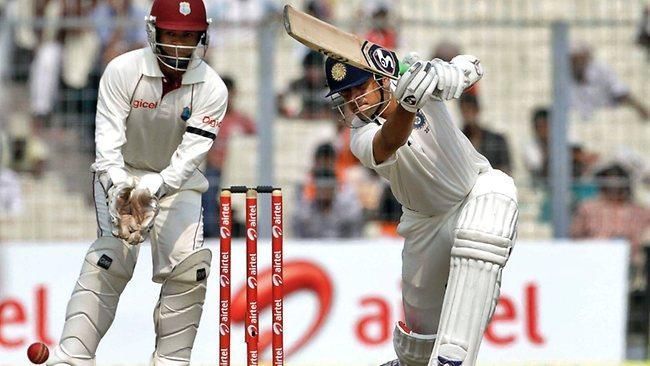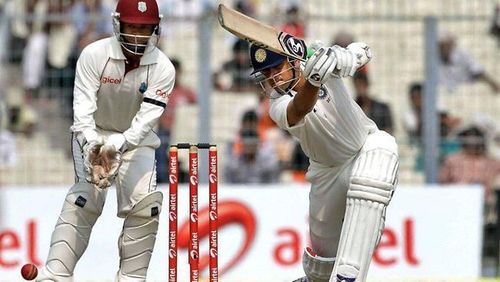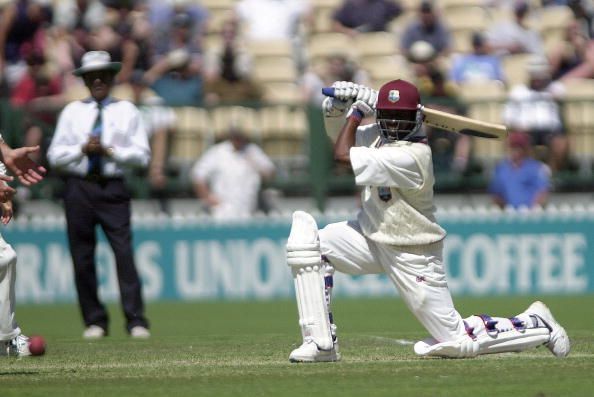
The poetry of the cover drive

Writing, sports and sports writing.
Two (a)vocations could not be farther apart. For all that is cerebral about sport – strategies that serve the team, stratagems that empower the individual – it is essentially an occupation of the body. For all that is physical about writing – the way one presses pen to paper, for instance, or the headache spawned by a half-completed story – it is essentially an occupation of the mind. The writers who record their thoughts on sport, though, sit enviably in the middle, their eyes watching and their ears listening to their favourite game, whilst sipping their favourite ale in London, beer in Brisbane or coffee in Chennai, their minds imagining themselves in the commentary box, searching for expressions to describe and decorate the events unfolding before them.
They are enviable precisely because in their minds, then through their pens, are rendered the purely physical actions of sport into metaphysical (read ‘poetic’) expressions, which have the magical potential to recapture, in the minds of readers, seminal sporting moments long after they have lapsed. A television replay is sometimes no match for the pen; especially when said pen is describing a spectacle in sport which is better seen as an expression of nuanced beauty rather than of brute force.
The front foot cover drive
The cover drive in cricket is, for many, one such spectacle. The cover drive played off the front foot is a thing of beauty and, as Keats might have it, a joy forever. The variant played off the back foot has its own merits, balance and majesty among them, but is nowhere (in this writer’s subjective opinion at least) as sublime a piece of artistry as the front foot affair. Such is the artistic attraction of the latter that it is what one tends to think of when the unqualified term ‘cover drive’ is mentioned.
Few strokes in cricket please the essential senses of sight and hearing as much as the cover drive does. The sight delights in, as it were, the exordium: the ball drifts or swings; the batter, their back lift poised high or low to match the perceived swiftness and degree of the drift or the swing of the ball, their front foot moving forwards simultaneously, prepares to get the willow to meet the ball. Sometimes the bat meets the ball full, sometimes on the half-volley and sometimes 'on the up', depending on the length of the delivery, in turn, determined by overhead conditions and the vagaries of the pitch.
The later a batter plays the ball, the more time they are ironically alleged to have, and the more the pundits sing and spectators swear. When the batter fails to make contact with the ball, as one is bound to do every now and then in a game of narrow margins, watching eyes despair, and might do worse depending on their allegiances; if the batter meets it, the eager sense of hearing takes over, for a moment.
Based on the quality of the ‘clunk’, ears know whether the ball has hit the sweet spot. Eyes then return, tracking the ball to the peroration — to the boundary or a fielder. The poetry of the stroke lies, though, as the poetry of pretty much everything else, in the scripting of it, and not the runs it yields. The beauty of a cover drive remains undiminished, whether it rolls on the green for four or is stopped by a pair of hands, for it is not trapped by the suffocating contexts of the bottom line.
Left-handed and right-handed cover drives

Nor, seemingly, are a good many left-handed batters who, given their inexplicable – and possibly enchanted – penchant for the off-side, peel off cover drives with such frequency and panache, that one wonders if they were born to do just that in life.
Brian Lara’s cover drive, on those occasions when he is not cutting the ball ferociously through point is an imperious drill; Sourav Ganguly’s a loving caress (and before him David Gower’s, too); Kumar Sangakkara’s a forthright statement; Graham Thorpe’s an elegant tool; Stephen Fleming’s a polished note; Saeed Anwar’s an eloquent tribute to economy of expression; and Mark Taylor’s a rare indulgence with the aesthetic.
The present tense in the previous sentence is no pretence against time: a left-hander’s cover drive, aside from a few notable exceptions, is one of those sporting artifacts which transcends time and remains, forever, present. While a southpaw’s cover drive thus bears the apparent stamp of birthright, a right hander’s exudes the authority born of earned pedigree.
Jacques Kallis’ cover drive is one for the sculptors; Rahul Dravid’s one for the swordsmen; Jayawardene’s one for the painters; Inzamam-ul-Haq's one for the storyteller who narrates slow but feel-good stories; Kevin Pietersen’s one for the peacocks; and Mithali Raj’s one for the incurably optimistic.
Indeed, there is a little poetry in each specimen of the cover drive just mentioned, but there is more — there is arguably a hint of a player’s personality. The stroke itself cannot be blamed or praised, however, for unwittingly conveying impressions about those by whom it is essayed: it is but the ink on the paper, and not the author. On the flip side, not everything special about a cover drive stems from the uniqueness of the author essaying the stroke.
More than nominal unity underpins the term ‘cover drive’, for it is much more than a mere linguistic blanket covering an unbridgeable – and unabridged – diversity. Rohit Sharma’s cover drive might evoke a perennial river and Virat Kohli’s, the feisty fire of ambition; Steve Smith’s cover drive might bring to mind the solution to a particularly hard puzzle and Kane Williamson’s the lines of geometry.
Joe Root’s cover drive can be easily identified as English vintage from a mile away, just as Marlon Samuels’ can be recognised as being West Indian; and AB de Villiers’s cover drive, much like every other stroke he plays, might be the work and play of irrefutable genius. Still, these variants are worthy of being called cover drives, and not just because they cause the ball to travel (towards the) east of long off and west of backward point.
Deceptively simple
Part of the attraction of the cover drive is that few strokes in cricket are as deceptively simple as it, especially when the ball is doing a bit: how many times has one seen a batter commit to the trajectory of the ball, only to find the edge of their bat, rather than the sweet spot, meet it? Reward matches risk, however, and when an immaculate cover drive is ‘materialised’, almost against the pragmatics of the world, even the usually quiet spectators on English grounds applaud; the somnolent seagulls on Australian greens are dispersed on long summer afternoons; and the passionate cricket fans of the subcontinent whip up a salvo despite the inconvenience of sitting, almost always, under a midsummer sun.
Timing, too, is a tenet emphasised by the cover drive: like a good joke, a good cover drive requires situational awareness, probably built up over time and many performances, but the difference between executing it well and executing it terribly – or not at all – at any given time is a split second.
A seemingly prodigal stroke, the cover drive is thus built on precision: on how closely the batter is watching the ball; on how precise the batter’s foot-and-hand movement is; and on the choice of when they want the willow to make contact with the leather. Watching a batter deny themselves the cover drive, as Sachin Tendulkar did for a major part of his stately Sydney double-hundred of 2004, is, therefore, as admirable as watching a batter allowing themselves the license to play it.
There is thus poetry in restraint, too, particularly when it concerns the cover drive.